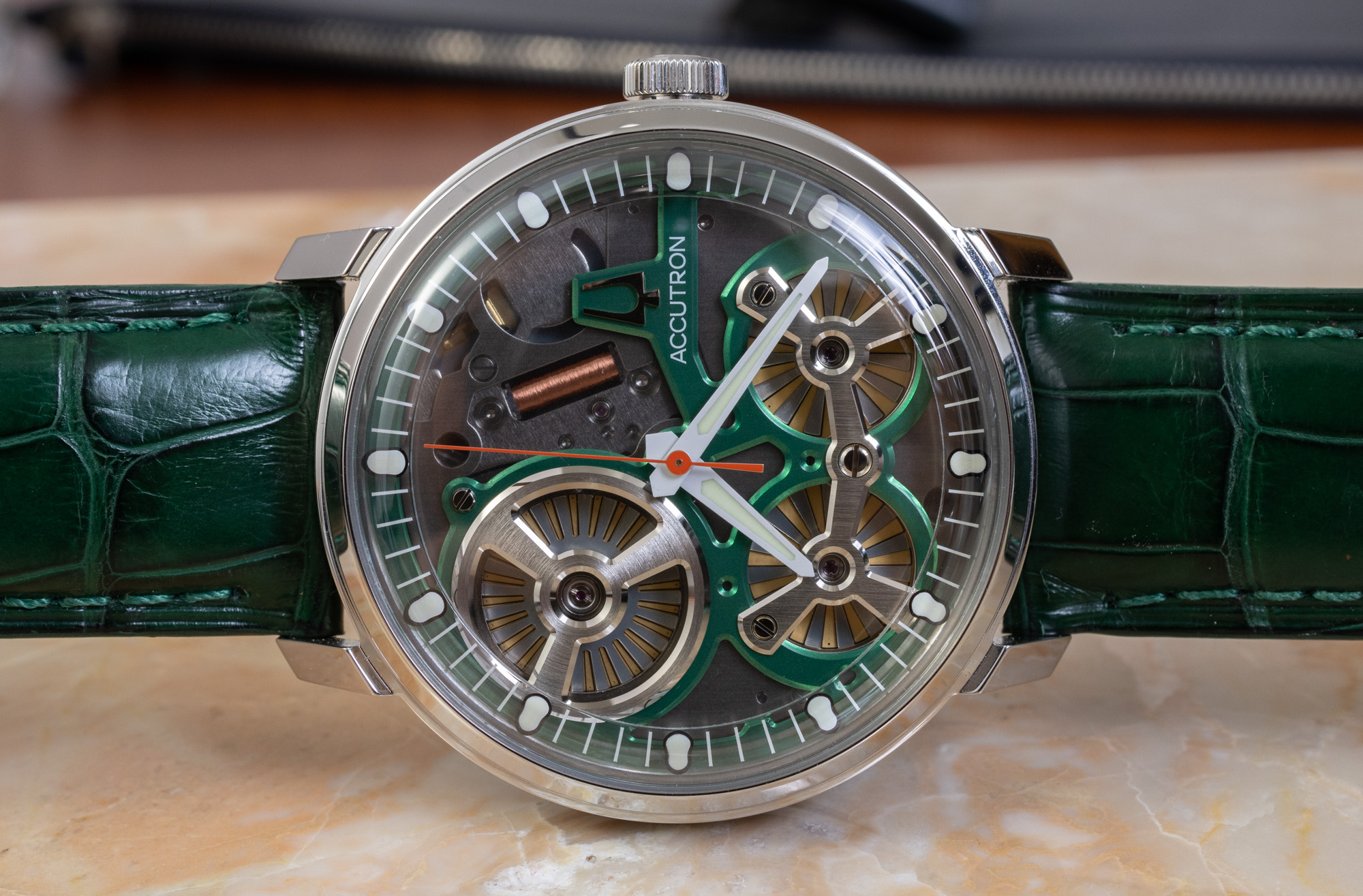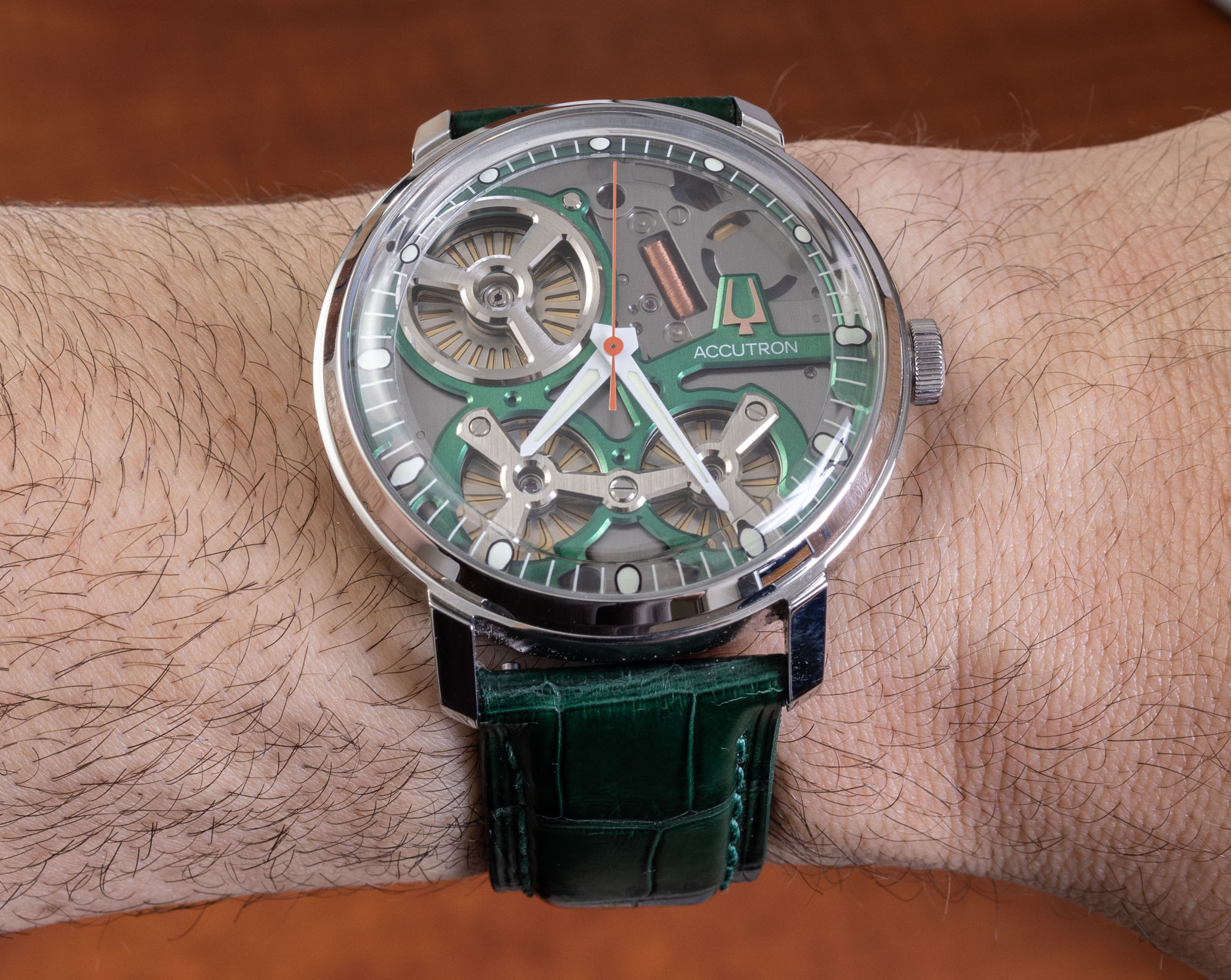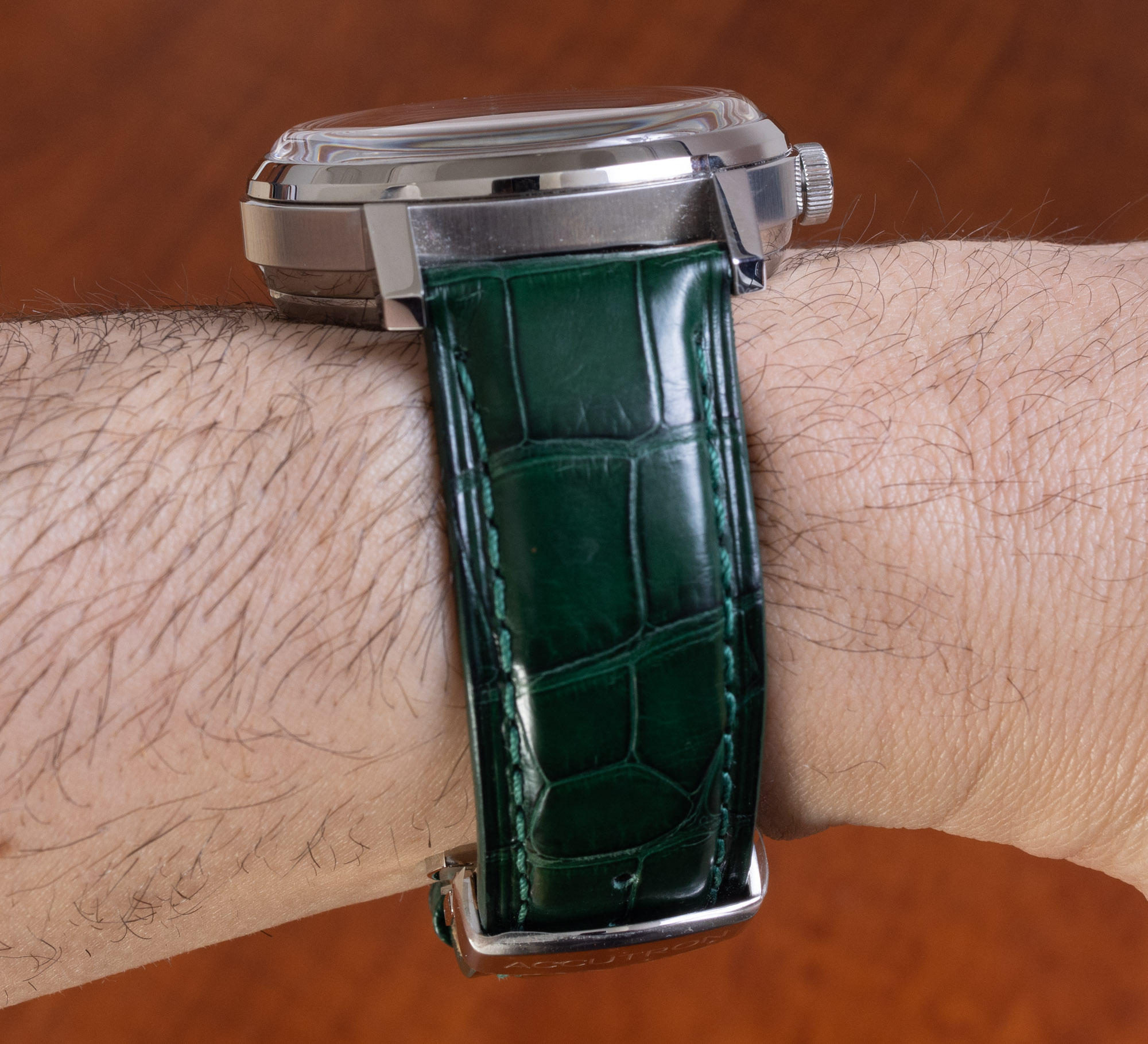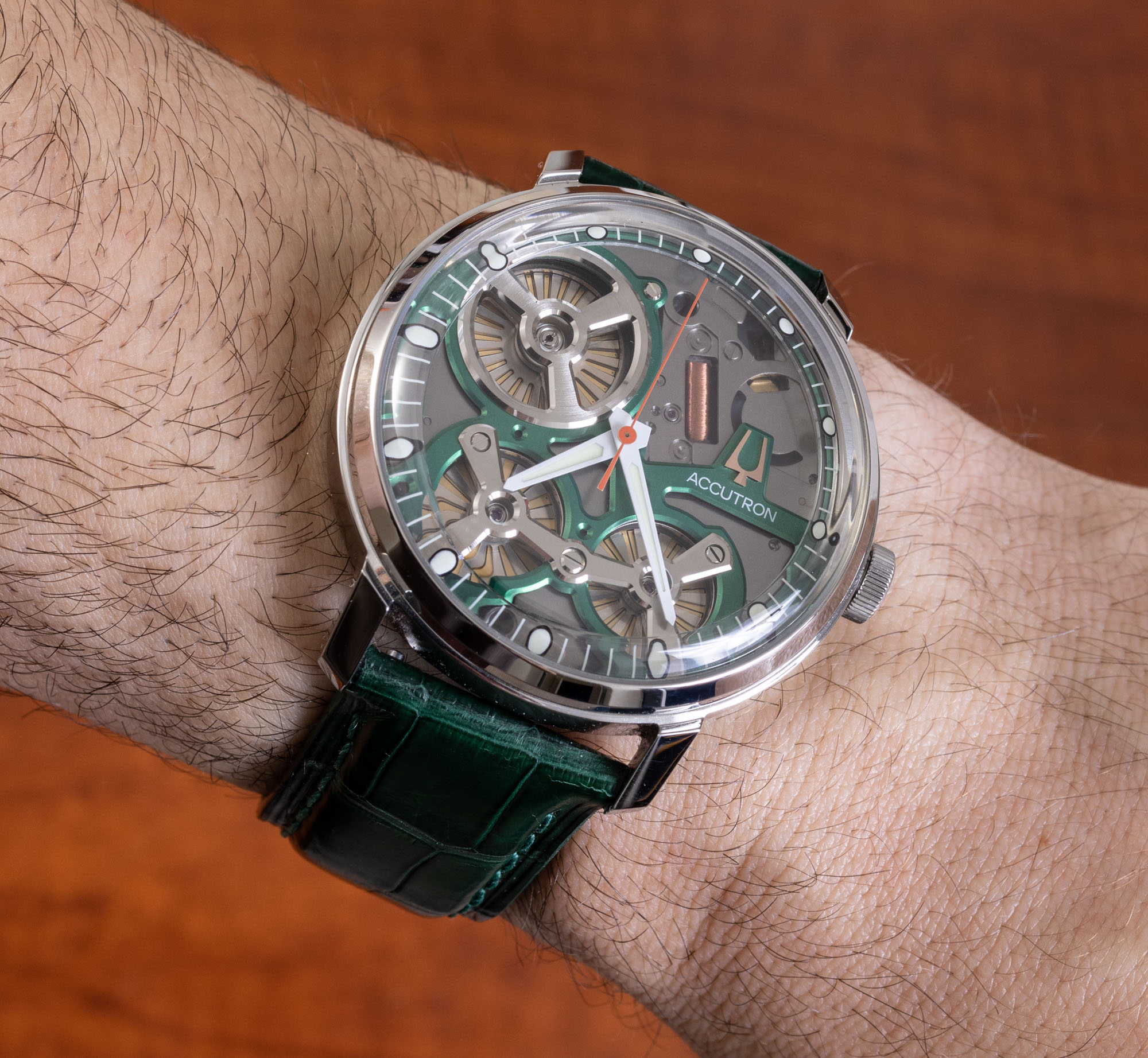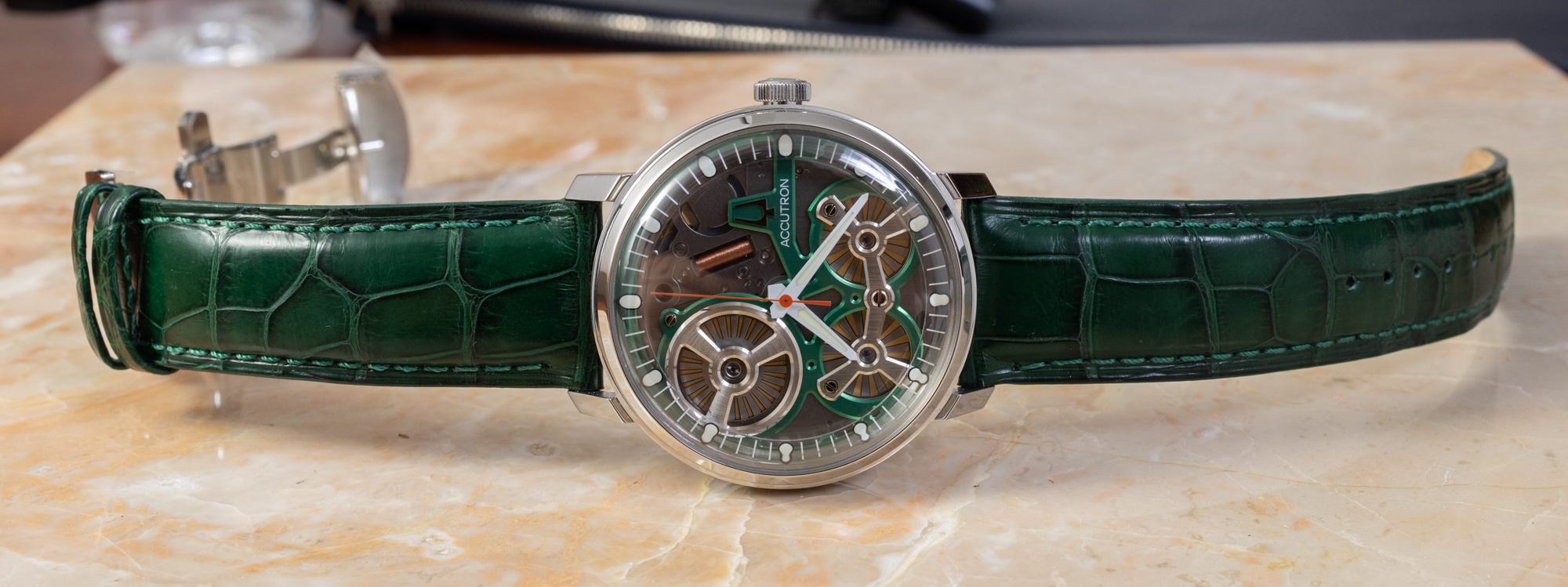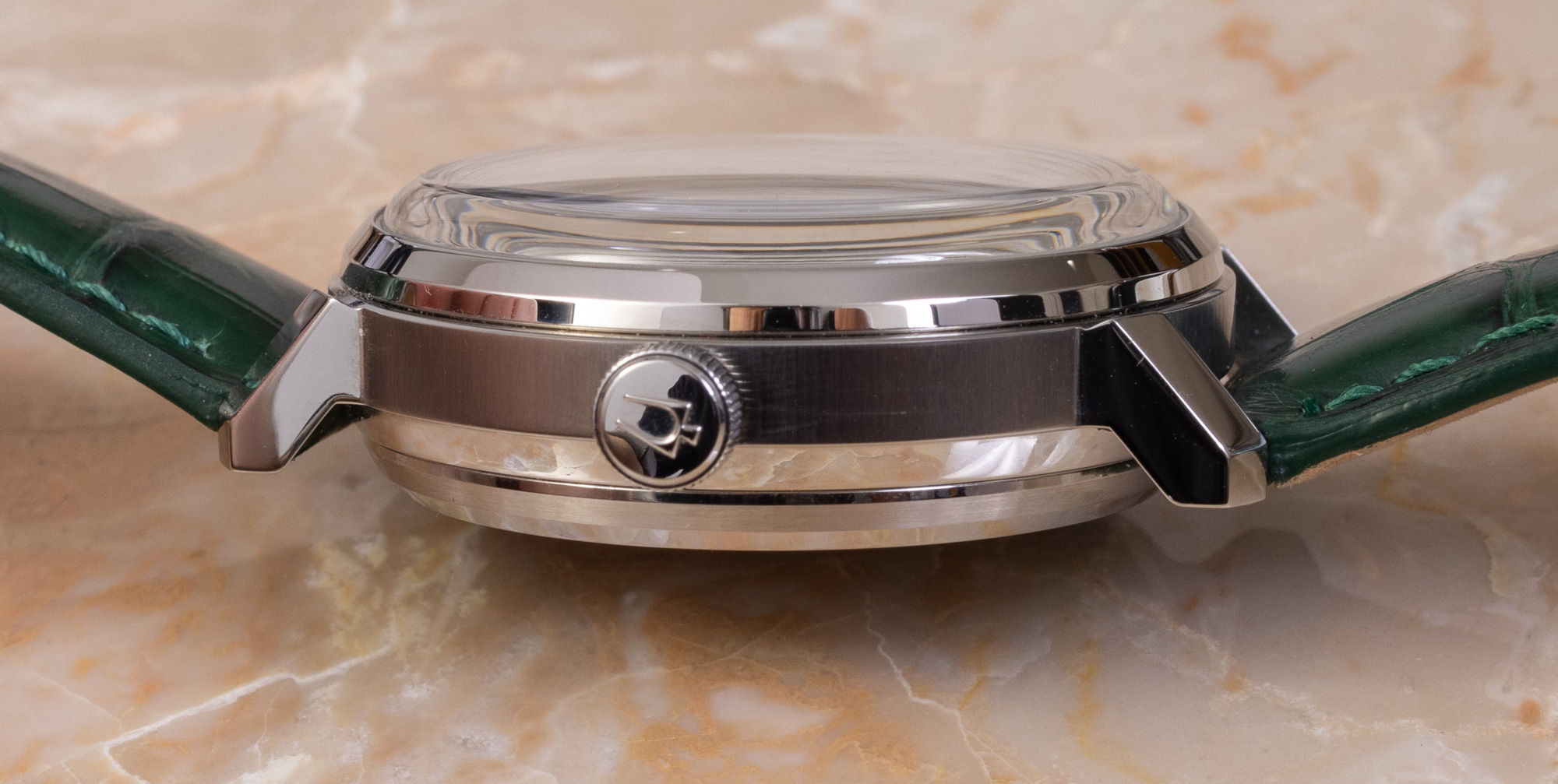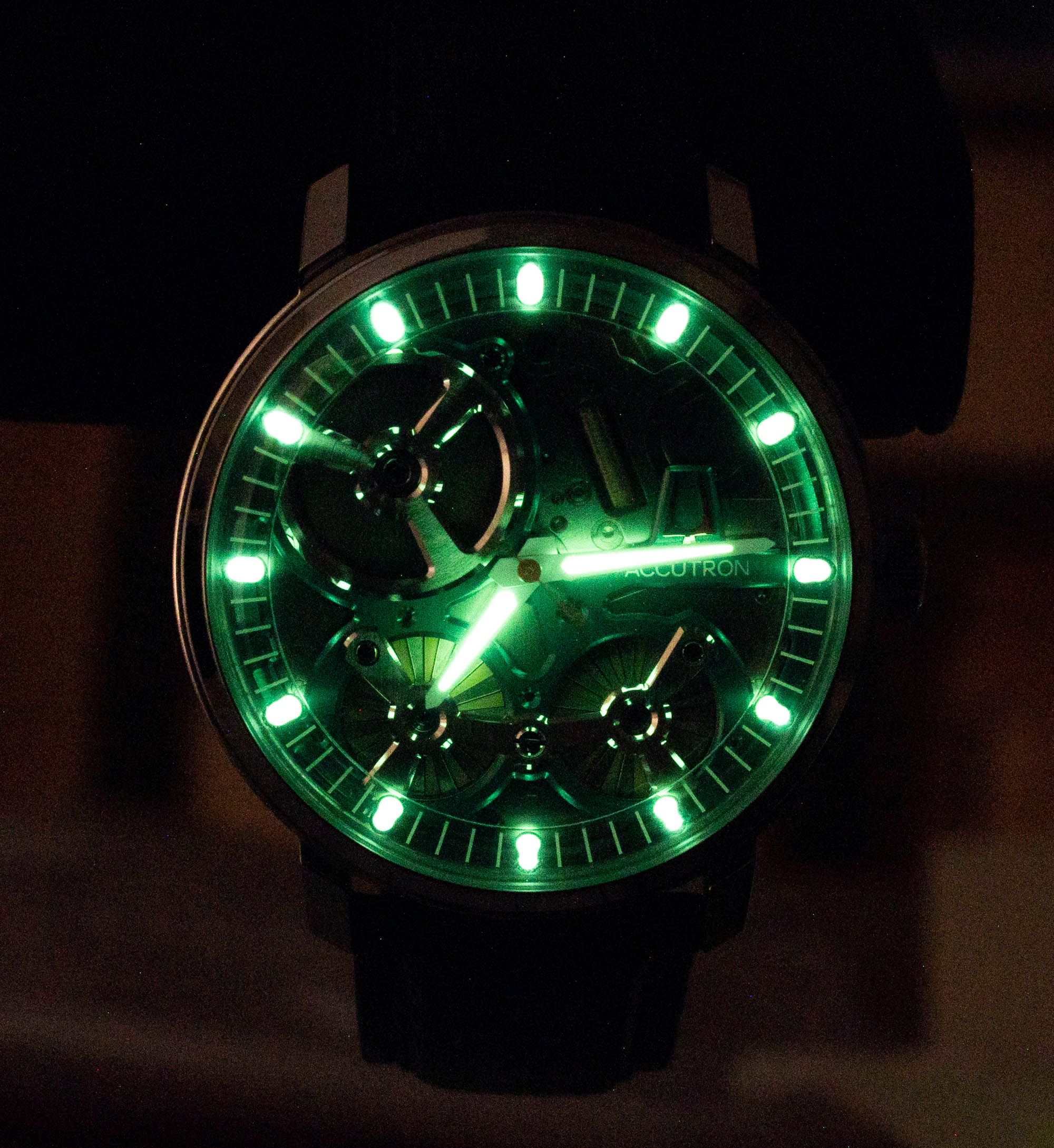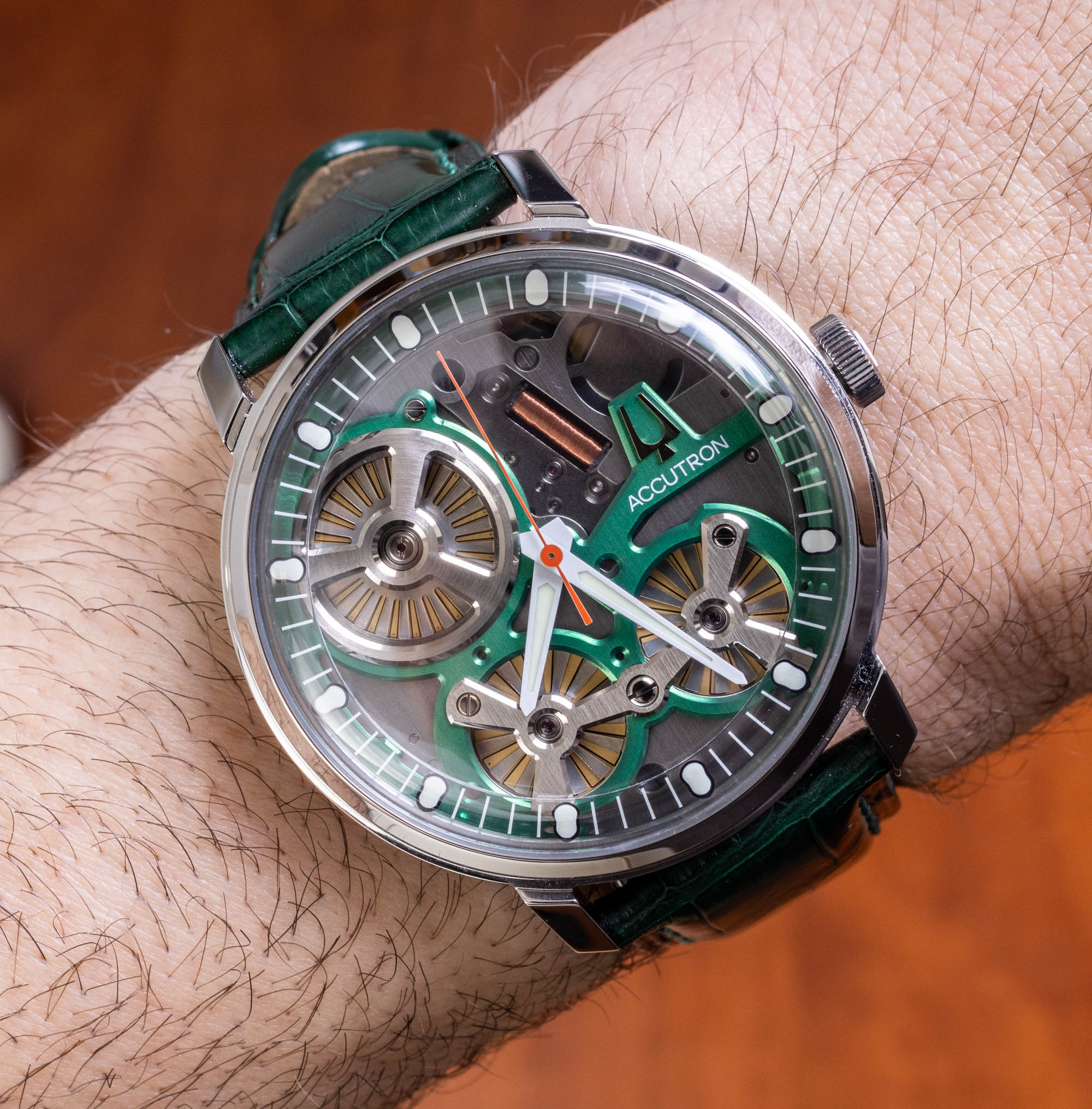 No, the timing was not great, but in 2019, right before the pandemic, the Citizen Group was planning on launching an entirely new brand that was previously part of Bulova (which it also owns). The first watch released was a thematic successor to a historic great. Accutron started in the early 1960s as a family of tuning fork-operated electronic movements under the Bulova brand. Accutron tuning fork watches were the height of timekeeping technology for about a decade until electronic quartz-operated watches came onto the market. What made Accutron so famous wasn’t just the performance but a series of watches known as the Accutron Spaceview, which featured open dials that allowed people to see the inner workings of the watches.
No, the timing was not great, but in 2019, right before the pandemic, the Citizen Group was planning on launching an entirely new brand that was previously part of Bulova (which it also owns). The first watch released was a thematic successor to a historic great. Accutron started in the early 1960s as a family of tuning fork-operated electronic movements under the Bulova brand. Accutron tuning fork watches were the height of timekeeping technology for about a decade until electronic quartz-operated watches came onto the market. What made Accutron so famous wasn’t just the performance but a series of watches known as the Accutron Spaceview, which featured open dials that allowed people to see the inner workings of the watches.
Originally, Bulova Accutron did not intend to make open dials for the tuning fork watches. The versions they made were produced as examples for watch dealers, as a sales aid to demonstrate that the inside of these tuning fork watches was different from the spring-powered movements most people were accustomed to. Dealers, however, pleaded with Bulova to actually produce commercial versions of the Accutron Spaceview with the open dials — and so history was made. The Accutron of today seeks to recall that history, while also taking the brand into a new direction. If you peruse the brand’s current collection of timepieces, you will see that they look into the past (with mechanical recreations of vintage Accutron models), as well as into the future with movements such as their proprietary electrostatic movement.
https://youtu.be/mRA0rEoJb7s
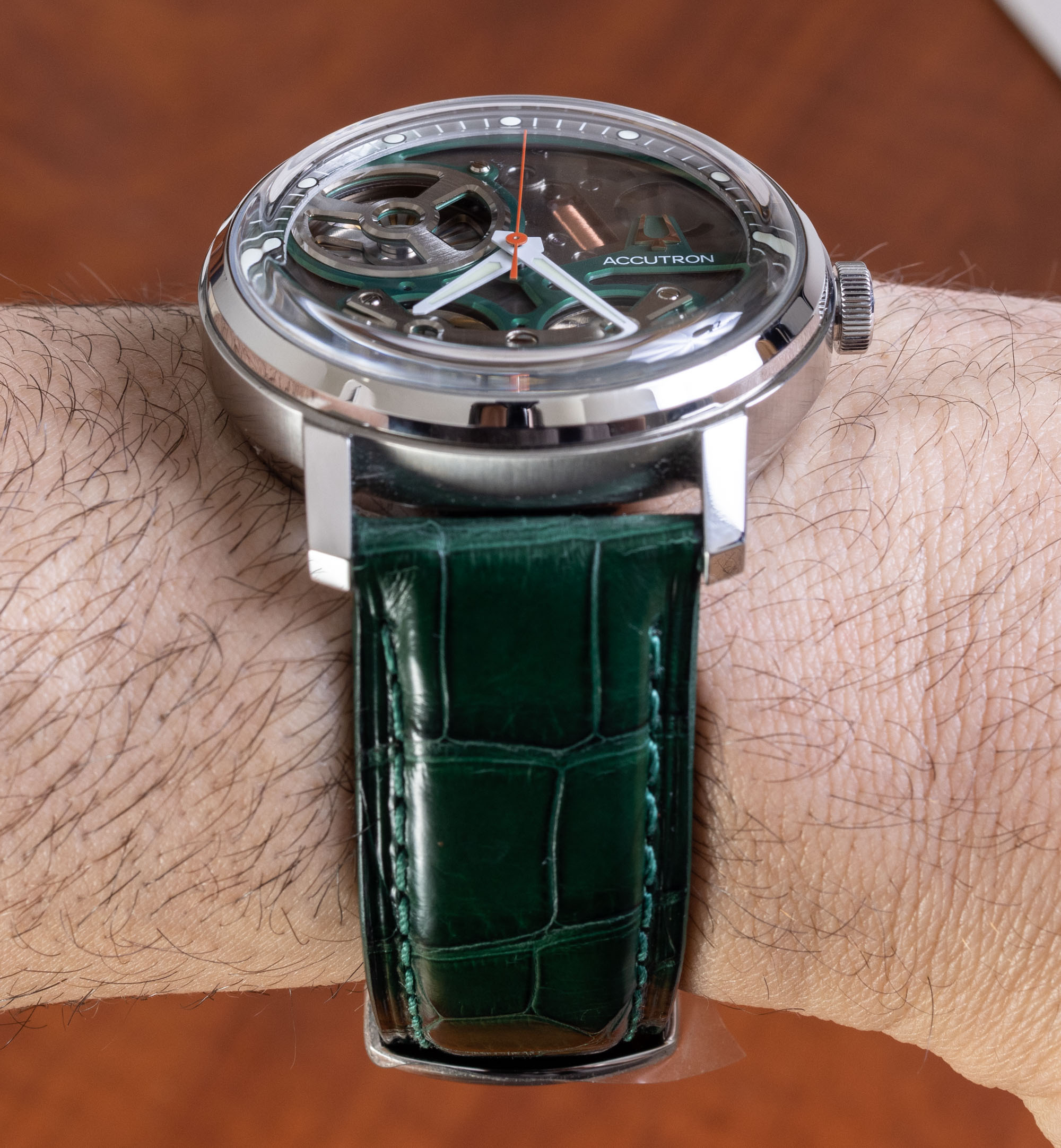
Since turning fork movements aren’t practical anymore, from a production or utility standpoint, Accutron wanted a new way to capture people’s imagination like the original Spaceview did. The decision was to use a complicated and novel wristwatch movement concept developed in Japan by the Citizen Group. These would be the basis for a new higher-end collection of Accutron products. Just a few years ago, there was a very limited market for high-end quartz watches, but (thankfully) the market is leaning toward luxury timepieces that have sophisticated electronic mechanisms inside.
aBlogtoWatch was among the first publications to check out the Accutron Spaceview 2020 watches prior to their release, and today, I am able to return with a long-term review of the reference 2ES6003 Spaceview 2020. (There are many versions because there are slight differences in the dial colors and straps.) Note that Accutron also produces a model family known as the Spaceview DNA. Those watches feature the same movements but a different and more futuristic case design.
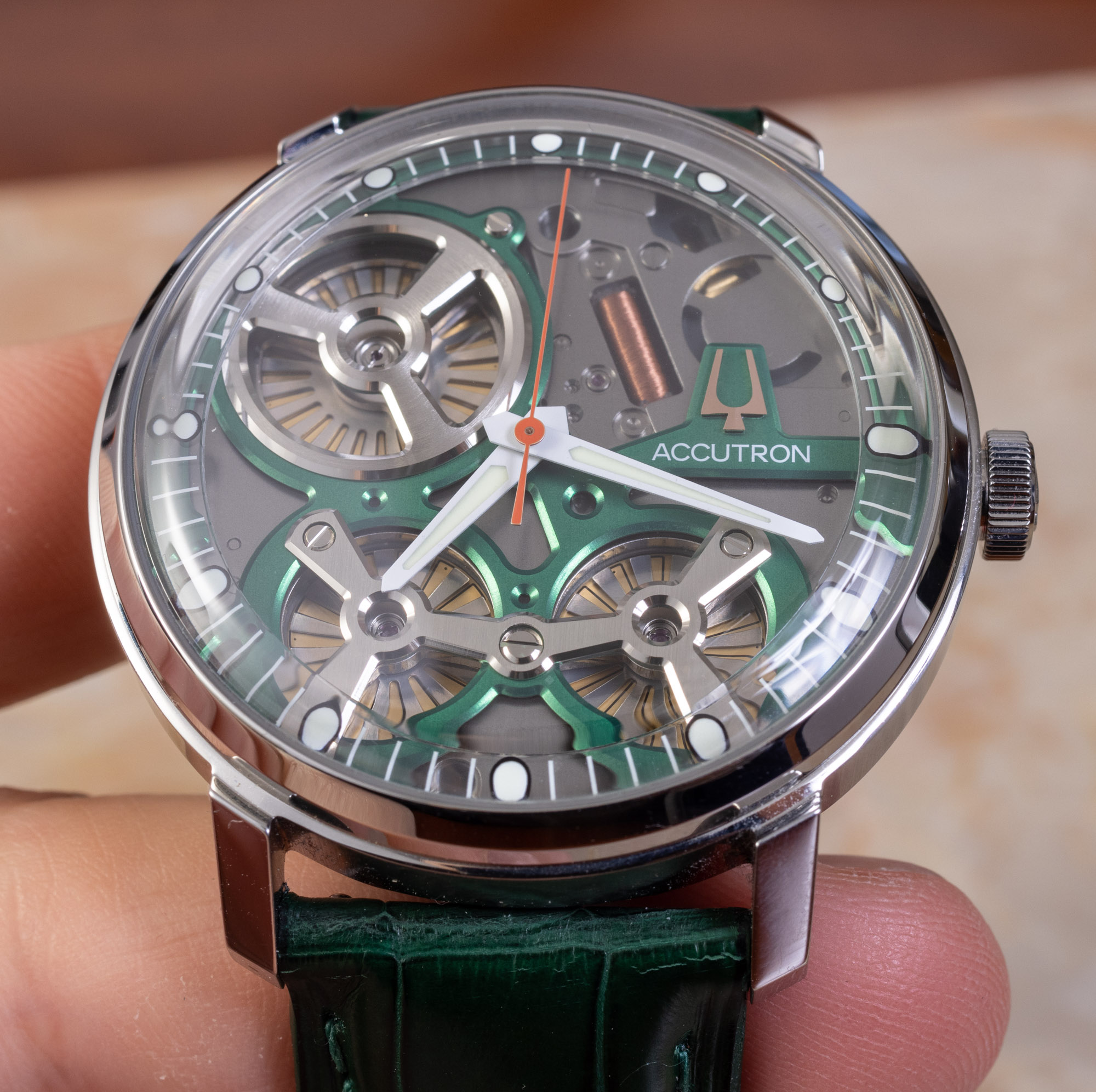
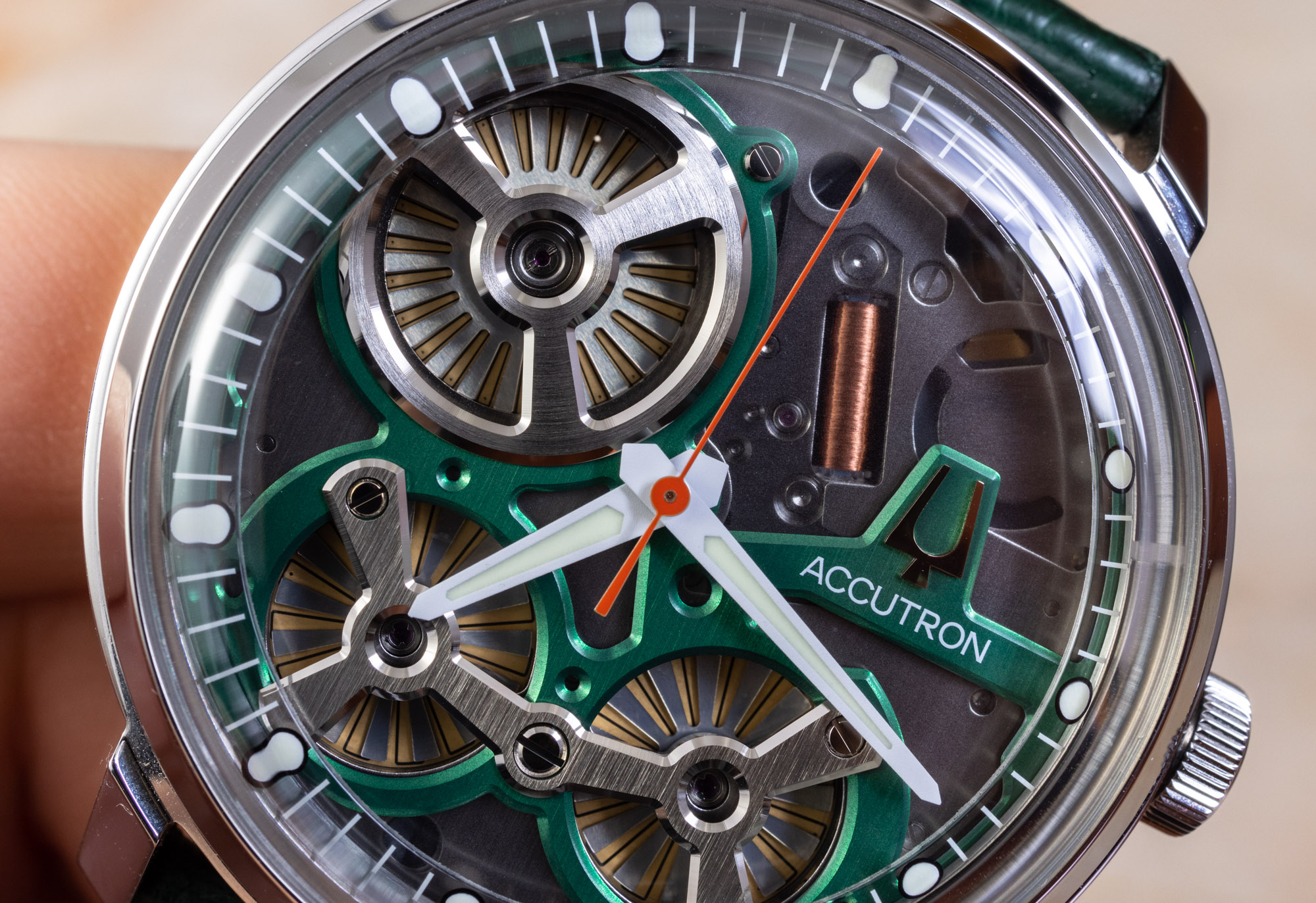
Overall, I like this watch a lot — its charms outweigh its quirks. I found myself wearing it a lot and having really great conversations about what was on my wrist (with timepiece fans and laypeople, alike). If a timepiece’s role today is to make the wearer appear more interesting and provide material for ad-hoc social conversations, then the Spaceview 2020 is a real winner. It might not offer the revolutionary technology of the originals from over 60 years ago, but it does make for an ideal halo to the Accutron brand, which, for the most part, is positioned higher (in terms of price point) than Bulova.
Probably the biggest questions from a watch lover’s perspective (aside from whether you are comfortable with the price) are whether the movement offers enough novelty and exactly how it works. Accutron itself has made the discussion about the electrostatic movements a bit obtuse. This is for two reasons. The first is that most people get immediately confused when you try to explain what this movement does, or at the least how it is different from standard quartz movements. Second is because this movement has quirks that Accutron doesn’t really want to talk about. They aren’t a big deal, but for example, if the watch’s main and auxiliary batteries die, then you need to send the watch in for service to get it started again. There doesn’t seem to be a way to personally “kickstart” the watch movement if it does entirely. This is by no means the only kind of electronic device to have this issue, but it can rub consumers the wrong way when they can’t just replace a battery on their own.
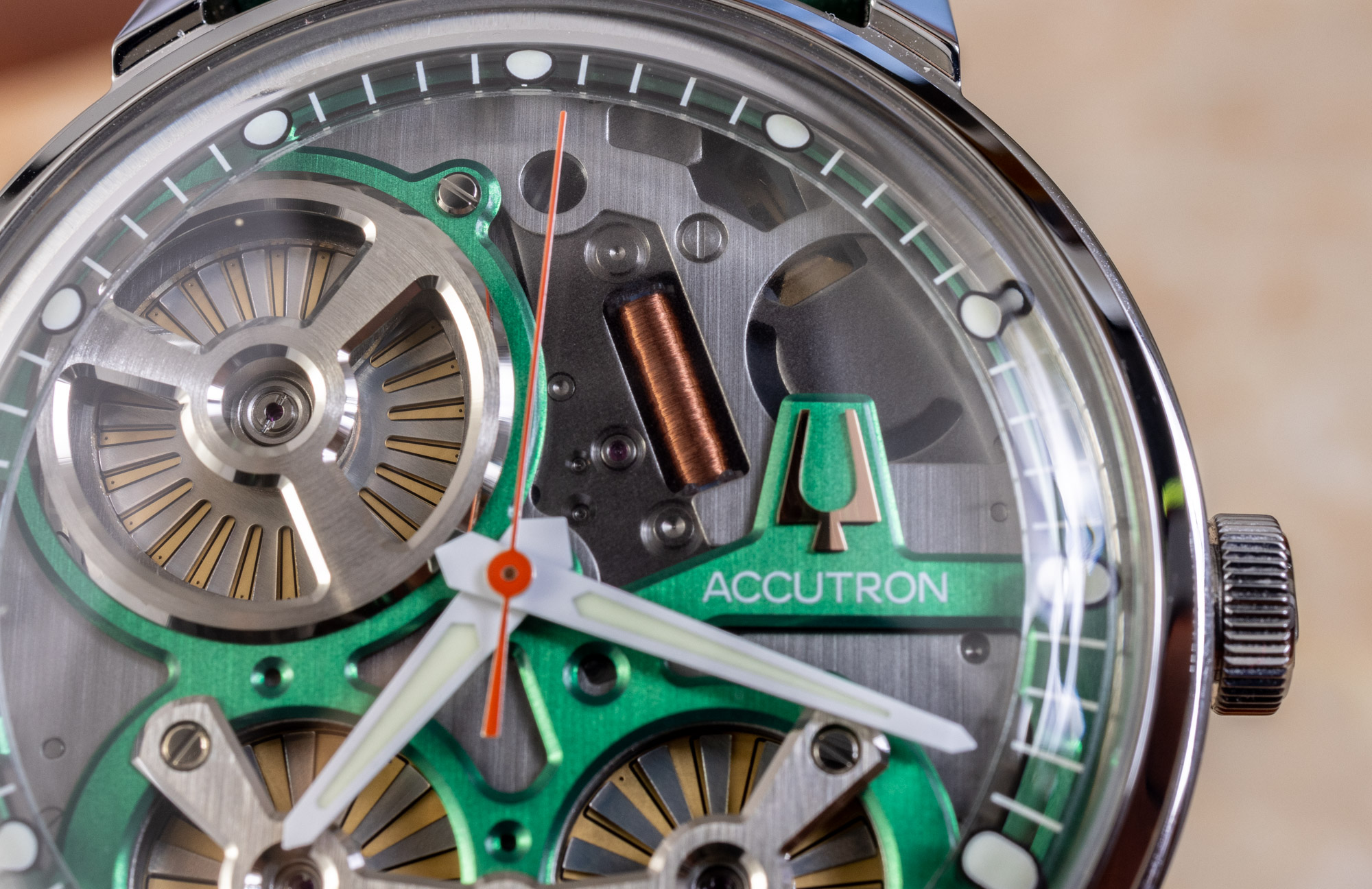
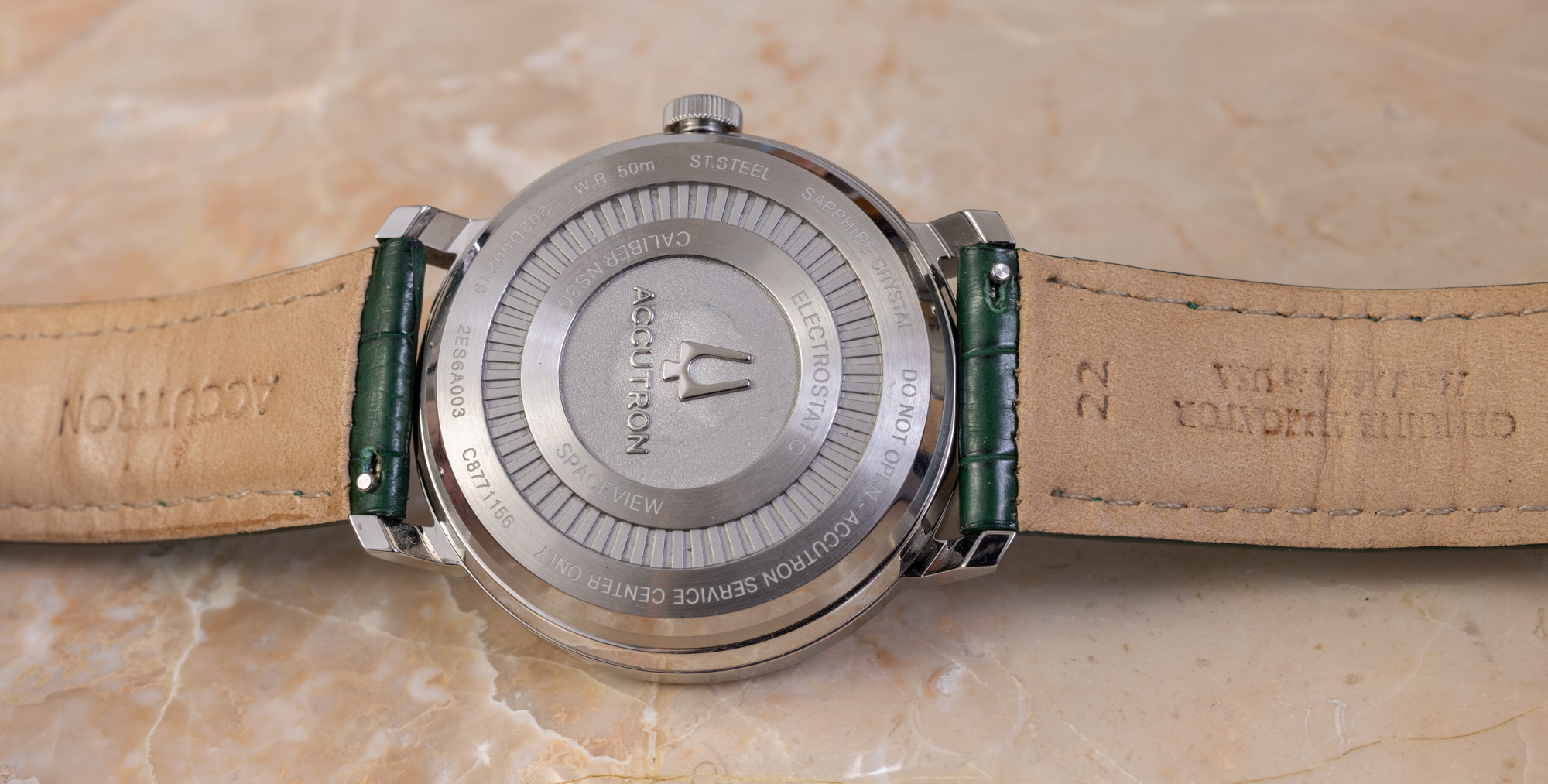
The Accutron website doesn’t discuss the operation or daily wearing experience of its electrostatic movement very much. Simple pieces of information such as power reserve or battery life are missing. The movement is also a combination of multiple sections that are designed to work together. For instance, the seconds hand and the hour and minute hands run using different systems, only to be integrated later so that they can be synchronized for time-telling purposes. The reality is that, in some ways, the operation and quirks of this electrostatic movement are just weird, and there isn’t an agreed-upon, elegant way of discussing them. What Accutron is trying to do here is offer a truly distinct (from other watches and the competition) high-end quartz wearing experience. It accomplishes this even though it means wearing a strange little mechanism on your wrist. But strange can equate with character, and this means at least some people out there will love it. I know that I was personally charmed by this timepiece on many occasions.
At its core, the point of this watch is to offer timekeeping accuracy, long-wearing autonomy, a sweeping seconds hand, and a unique way of generating electricity. That latter component is where the name of the movement comes into play, and where much of the initial confusion occurs since people are not really familiar with the concept. I am not a mechanical/electrical engineer, but I will do my best to explain this movement and what people should know about it. First, when it comes to electric power generation using kinetic energy (movement), there appear to be two main ways of generating power. First is electromagnetic power generation, which is what most people are accustomed to, especially in watches like the Seiko Kinetic movement, which also features an automatic rotor. In this instance, electrons are pushed into a copper coil using the motion of a magnet. Second, is electrostatic power generation, which is similar but relies upon generating and capturing static electricity. This is lower power but more constant than electromagnetic power generation, as I understand it. Accutron uses the first wristwatch movement that features an electrostatic power generation system. It also relies on kinetic movement, but in a slightly different form. For example, just tapping the case of the Spaceview 2020 causes the front-facing dial “turbines” to spin. That spinning is the electrostatic power generation in effect. These turbines are responsible for generating the power that operates the minute and hour hands. There is also an automatic rotor in the rear of the watch, which generates the power for the sweeping seconds hand.
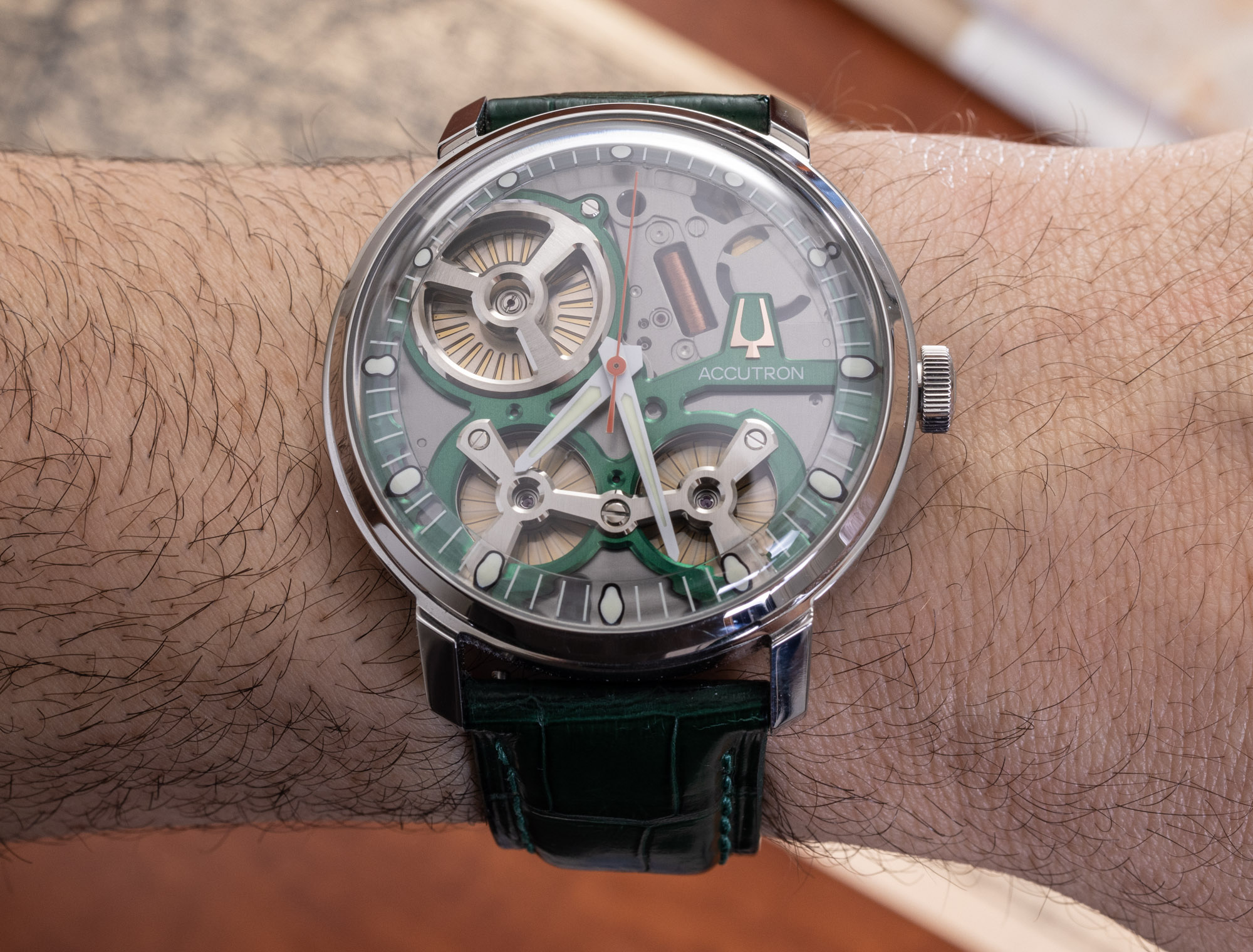 The reason the caliber NS30 movement is designed this way is because the seconds hand (when it is running) continuously sweeps and draws a lot more power. The original Accutron tuning fork watches has a sweeping seconds hand, so this was an important feature for the new movement. On top of that, the same development team that created the electrostatic movement also worked on the Bulova Precisionist family of quartz movements that also feature a sweeping seconds hand. So, even though there is little practical reason to have a sweeping seconds hand (versus a ticking one), for style and emotional purposes, it was deemed important for this watch. Given the high power consumption of the seconds hand, it is designed to turn off when not in use. When the timepiece does not experience movement/motion for a few minutes, the seconds hand stops at the 12 o’clock position on the dial. Only when you pick up the watch and shake it around for a few seconds will the seconds hand pop back to life. In practice, this means that a lot of the time, even while you are wearing the Spaceview 2020, the seconds hand will not be moving until you aggressively jostle your wrist around a bit. I found all this to be rather amusing, and it heightened the connection between the wearer and watch for this interesting timepiece-wearing experience.
The reason the caliber NS30 movement is designed this way is because the seconds hand (when it is running) continuously sweeps and draws a lot more power. The original Accutron tuning fork watches has a sweeping seconds hand, so this was an important feature for the new movement. On top of that, the same development team that created the electrostatic movement also worked on the Bulova Precisionist family of quartz movements that also feature a sweeping seconds hand. So, even though there is little practical reason to have a sweeping seconds hand (versus a ticking one), for style and emotional purposes, it was deemed important for this watch. Given the high power consumption of the seconds hand, it is designed to turn off when not in use. When the timepiece does not experience movement/motion for a few minutes, the seconds hand stops at the 12 o’clock position on the dial. Only when you pick up the watch and shake it around for a few seconds will the seconds hand pop back to life. In practice, this means that a lot of the time, even while you are wearing the Spaceview 2020, the seconds hand will not be moving until you aggressively jostle your wrist around a bit. I found all this to be rather amusing, and it heightened the connection between the wearer and watch for this interesting timepiece-wearing experience.
I attempted to ask Accutron the simple question, “What is the power reserve of the battery in this watch?” There was no simple answer, and I won’t attempt to repeat it. This is where Accutron doesn’t really want to state that if you leave the watch unattended for too long (I believe it is about two years), then the battery inside will die to the state that only Accutron can replace it. Again, this is not meant to be a watch for which you ever change the battery. The idea is that if you wear the watch every once in a while, then you will never have to change the battery. The only this is that you do indeed need to wear this watch every once in a while. Ironically, if there was ever a strong case to put a watch on a winder, it would be here. The irony is that this isn’t an automatic mechanical watch, for which watch winders are primarily designed.
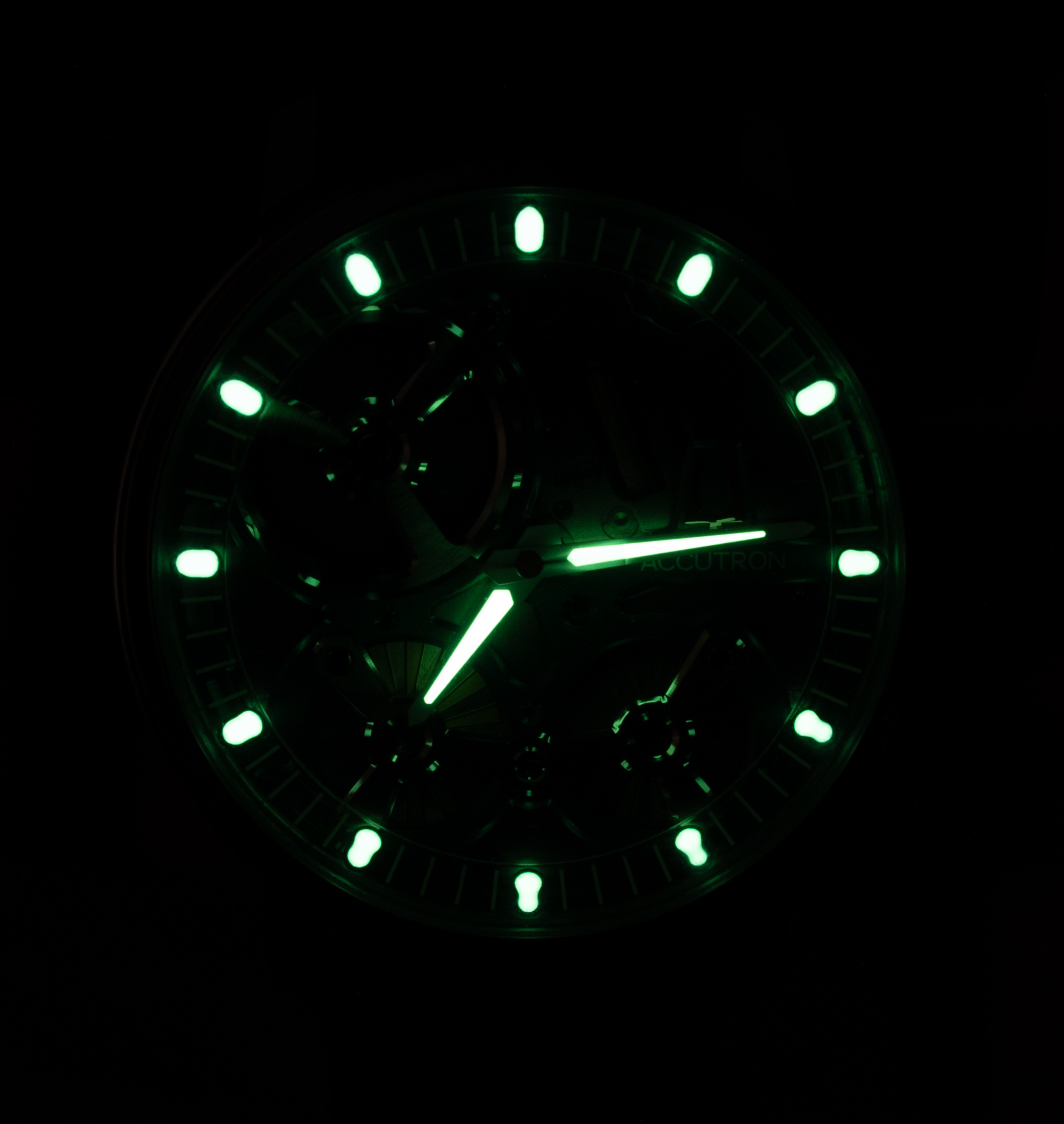 So, let’s recap. The electrostatic movement uses a traditional quartz regulation system for high accuracy, but how power is generated and how the movement functions is a bit different from what most people are used to in the Accutron Spaceview 2020. On the plus side, you have a genuinely cool movement that is fun to watch and play with, and on the negative side, you have a seconds hand that is always trying to stop in order to preserve power and a system that will entirely die if you let the internal battery die after about two years of not attending to it.
So, let’s recap. The electrostatic movement uses a traditional quartz regulation system for high accuracy, but how power is generated and how the movement functions is a bit different from what most people are used to in the Accutron Spaceview 2020. On the plus side, you have a genuinely cool movement that is fun to watch and play with, and on the negative side, you have a seconds hand that is always trying to stop in order to preserve power and a system that will entirely die if you let the internal battery die after about two years of not attending to it.
Even though the movement system in the case is large, Accutron did an admirable job of building an attractive timepiece around it. For 2023, the company has a new version of the Spaceview with the movement oriented a bit differently and a smaller-feeling case. Which you prefer is really a matter of personal taste. This watch case is in polished steel with a box-style sapphire crystal over the dial and 50 meters of water resistance. The case is 43.5mm-wide and considerably thick at 15.9mm. The shorter lugs and expansive dial help keep the wearing experience comfortable and visually appealing for most wrists. I did find the case to be comfortable and the green hues of this Spaceview 2020 model to be attractive. Green is probably the most important color for Spaceview watches, at least historically speaking. I also found myself liking the dial a lot. The lumed hands and hour markers are fairly easy to read, and the pretty open-work dial doesn’t actually detract from legibility that much.
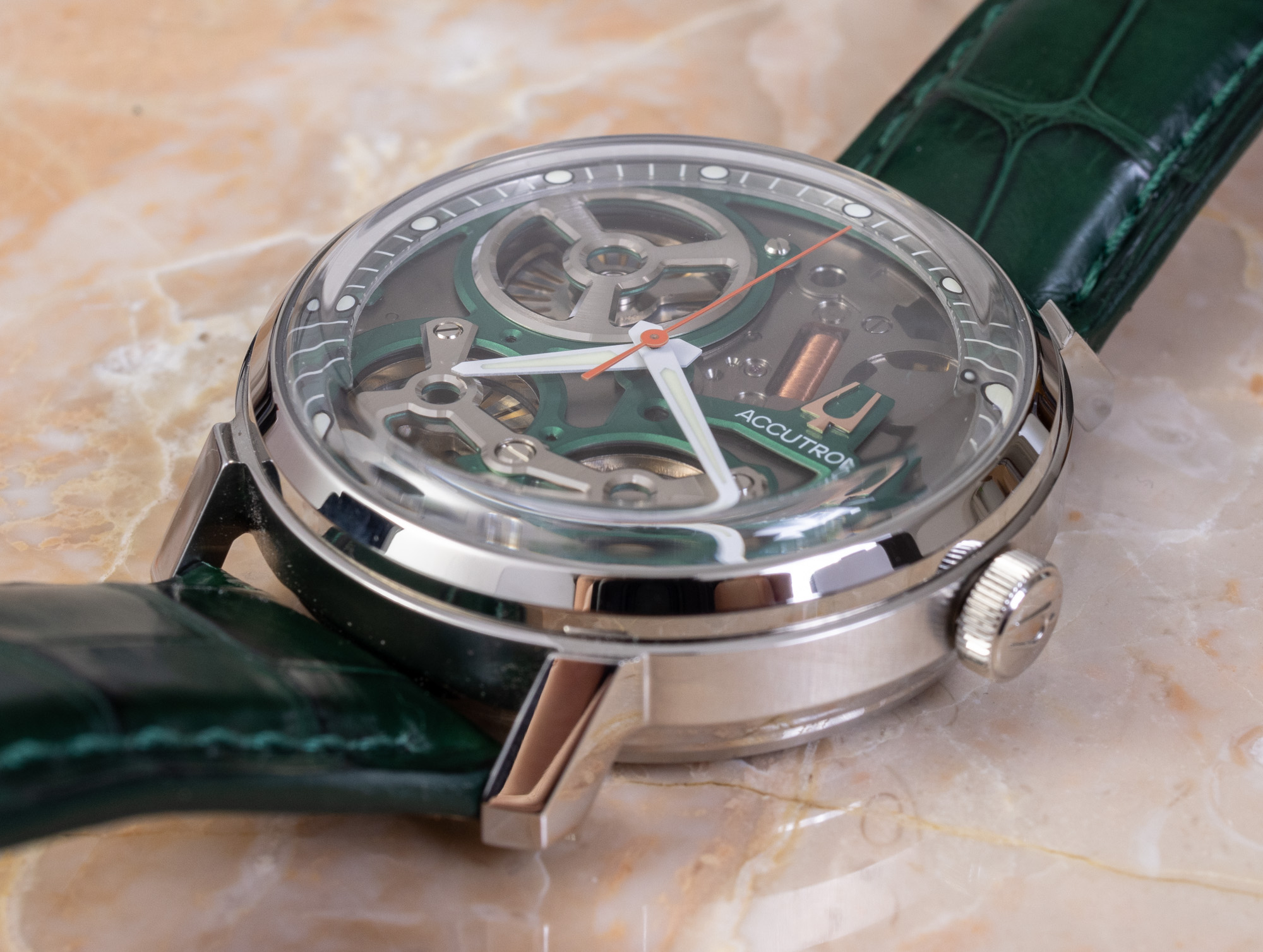 With nothing else out there on the market like it, Accutron is really relying on watch nerds and early adopters to be the types of people who rally behind products like the Spaceview 2020. Long-term success for this product will be almost entirely reliant on the general popularity of high-end quartz. This luxury timepiece category is still niche, even though it is much more advanced than where it was a few years ago. Japanese brands are still at the forefront of high-end quartz, but the Europeans have also recently taken a new interest. I believe that a combination of products and marketing energy behind high-end quartz means that this category will have a very bright future, with items like the Accutron Spaceview 2020 being exactly the kind of product that the market will celebrate. Retail price for the Accutron Spaceview 202 watch is $3,650 USD. Learn more at the Accutron watches website.
With nothing else out there on the market like it, Accutron is really relying on watch nerds and early adopters to be the types of people who rally behind products like the Spaceview 2020. Long-term success for this product will be almost entirely reliant on the general popularity of high-end quartz. This luxury timepiece category is still niche, even though it is much more advanced than where it was a few years ago. Japanese brands are still at the forefront of high-end quartz, but the Europeans have also recently taken a new interest. I believe that a combination of products and marketing energy behind high-end quartz means that this category will have a very bright future, with items like the Accutron Spaceview 2020 being exactly the kind of product that the market will celebrate. Retail price for the Accutron Spaceview 202 watch is $3,650 USD. Learn more at the Accutron watches website.
Necessary Information:
>Brand: Accutron
>Model: Spaceview 2020 (reference 2ES6A003 as tested)
>Price: $3,650 USD
>Size: 43.5mm-wide, 15.9mm-thick, ~50mm lug-to-lug distance
>When reviewer would personally wear it: Fun daily wear or when the colors are stylish. Makes for a great conversation piece in many settings. Alligator strap should be swapped for something else if wearer is being genuinely sporty.
>Friend we’d recommend it to first: Tech and design lover seeking a unique high-end watch-wearing experience that will be interesting to watch collectors and lay folk, alike.
>Best characteristic of watch: Rich personality overall, good quality, interesting movement, compelling, legible dial.
>Worst characteristic of watch: Expensive value proposition in current marketplace. Large movement forces case to be thick. Possible long-term service needs for watches left inactive for two years or longer.

